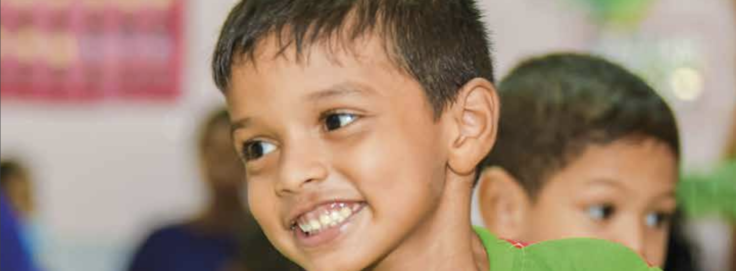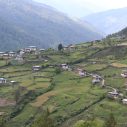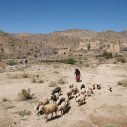
Search
Sri Lanka launches official national MPI linked to a child MPI

The Department of Census and Statistics (DCS) in Sri Lanka launched the national Multidimensional Poverty Index and child Multidimensional Poverty Index today as official statistics to guide poverty reduction in Sri Lanka.
Sri Lanka’s national MPI is a leading example of the approach to directly link the individual measure of child poverty for children under 5 with national poverty, also known as the ‘drawer approach’. The individual child MPI includes the same ten indicators as the national MPI grouped into the three dimensions of education, health and standard of living, plus it adds individual indicators of undernutrition and early childhood development for each child aged 0-4 years of age. The child MPI helps identify the extent to which children under 5 are affected by poverty in Sri Lanka through using indicators that are informative for this age group.
The report which examines poverty across rural, urban and estate areas and covers Sri Lanka’s 25 districts is based on data from Household Income and Expenditure Survey 2019 (HIES 2019). The findings are also disaggregated by age group and household headship. The national and child MPI complement monetary poverty measures for evidence-based policy decisions and will be reported as Sustainable Development Goal (SDG) indicator 1.2.2 as cross-tabulations show the value-added of having both measures.
Sri Lanka’s MPIs were developed by DCS in partnership with OPHI and UNICEF Sri Lanka. The national MPI and child MPI will be updated and published regularly to monitor progress.
Key findings
National Multidimensional Poverty Index
- Approximately one out of every six (16 per cent) people in Sri Lanka are multidimensionally poor.
- Estate areas are pockets of poverty requiring policy attention as more than half (51.3 per cent) of all people in these areas are living in poverty.
- Rural areas are also a key focus point as more than eight out of every 10 (80.9 per cent) people who are poor live in rural areas.
- Poverty levels in districts vary significantly from a low of 3.5 per cent in Colombo to 44.2 per cent in Nuwara Eliya. Even for districts with similar MPI values, high-impact policies must consider the indicator composition of poverty, in order to plan the most cost-effective response.
- People aged 65 years and older are the poorest age group in Sri Lanka, with the highest headcount ratio (17.9 per cent) as well as intensity of poverty and MPI.
- The deprivations that require immediate policy attention are the lack of access to health
- facilities and basic facilities, clean cooking fuels, and safe drinking water.
- Deprivation patterns – and therefore policy and budgetary responses – vary by district and age.
Child Multidimensional Poverty Index
- Using the child MPI more than four out of every 10 (42.2 per cent) children under the age of 5 years are multidimensionally poor.
- All children considered poor by the national MPI are concurrently poor by individual level child MPI. In addition, the child MPI adds a fourth dimension comprising deprivations in each child’s nutrition and cognitive development.
- One third (33.4 per cent) of children aged 0-4 years old are multidimensionally poor and either underweight or stunted.
- One sixth (16.4 per cent) of children aged 0-4 years are multidimensionally poor and deprived in early childhood development.
- Nearly half of children 0-11 months and 4 years old are poor, mainly due to undernutrition, and for children who are 4 years old, not being in preschool.
- Encouragingly, there are no statistically significant differences between the poverty levels of girls and boys in Sri Lanka.
Read more about the Sri Lanka MPI
Download the Sri Lanka’s MPI 2019 report
















